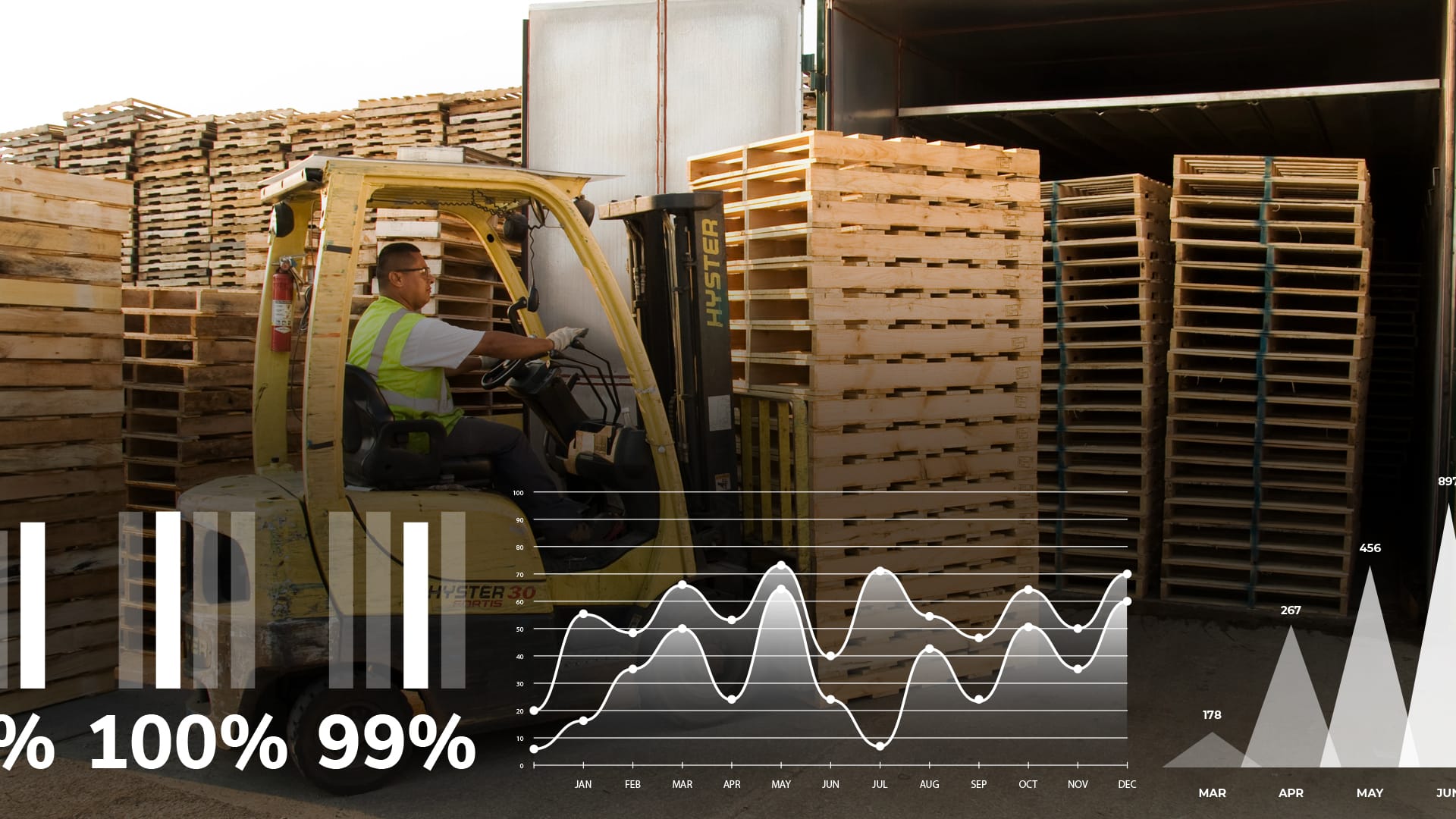Importance of Tracking Pallet KPIs
Tracking Key Performance Indicators (KPIs) in the pallet industry is an extremely important component of a partnership between a pallet buyer and supplier.
If you are a pallet supplier, tracking KPIs allows you to identify areas of improvement for your company. It can also be used as a way to identify new strengths and unique selling opportunities. Your marketing team can then turn around and use these strengths to bring in more satisfied customers.
For the customer buying pallets from a supplier, certain KPIs allow you to directly compare different suppliers, hold them accountable, and quantify the value you are receiving.
At Kamps Pallets, we place significant importance on data management and tracking KPIs for these reasons – and more. Being diligent when it comes to these practices allows a pallet supplier to improve their internal operations and satisfy the customer in a more transparent, and improved, manner.
Top Three Pallet KPIs to Track
1. On-Time Delivery
On-Time delivery is a KPI that can directly impact a pallet company, its customers, and its customer’s customers.
As a customer buying pallets, your product cannot move without pallets. Your entire shipping schedule can be impacted because of missed pallet deliveries. This, in turn, can impact relationships with your customers and increase your costs. A pallet supplier not tracking on-time deliveries gives no sense of security and assurance to a customer that their supply chain will stay consistent.
2. Quality
A supplier that does not have a KPI to measure quality of wooden pallets delivered can result in customer’s expectations not being met. As a customer, receiving inconsistent quality pallets can lead to disputes; which, in turn, can lead to returns and exchanges. The risk to your down line supply chain and customers is too great to not measure and manage. You want to ensure that you are getting exactly what you are paying for; and that those occurrences when you did not are tracked and measured.
3. Labor Productivity
Having a pallet vendor who does not know their costs is a disaster in waiting.
If your supplier is spending too many man-hours on manufacturing pallets, there is a high likelihood that their prices are inflated. This is due to their own high labor costs. A pallet supplier that tracks labor productivity is an indicator that they are focused on running lean (optimized) operations and are price conscious.
High costs due to labor inefficiency can also lead to your pallet supplier going out of business completely. Above market pricing, combined with high labor costs, is extremely tough to overcome in the pallet industry. As a customer, you want to partner with a pallet supplier that is structured to be in business for the long term.
Takeaway
The three pallet KPIs listed above are the three most important performance indicators that we feel your pallet supplier should be actively tracking. However, there are many other performance indicators that can and should be tracked. At Kamps Pallets, we have over 10 KPIs that we track for our customers. Doing this holds us accountable to our customers, and ensures that we have a pulse on all aspects of our operations and customer service.




